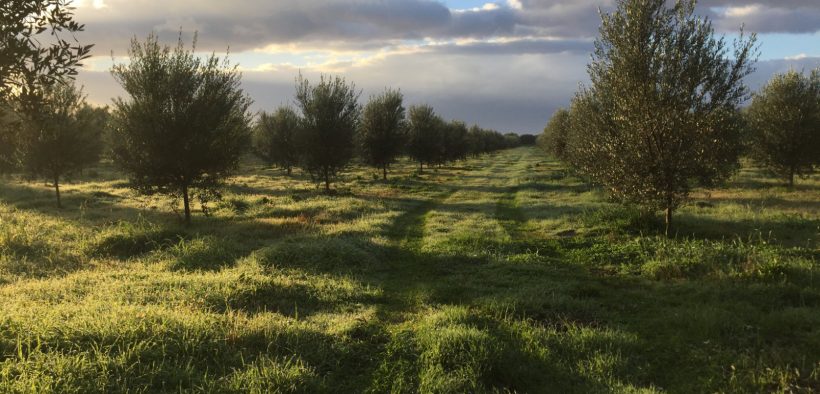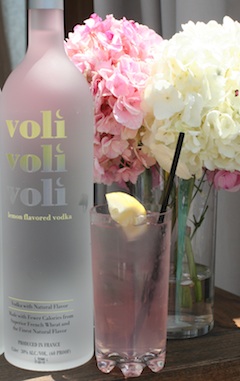Laconiko olive oil: making pantry essentials posh

Laconiko Olive Oil Co. founders Diamantis and Dino Pierrakos speak with Elyse Glickman on getting more mileage for your cooking and beauty routines with a higher grade of oil
Olive oil has been an everyday staple in the “Mediterranean diet” since the beginning of history, and the embrace of “global cuisine” and its many health benefits have had a hand in making it an essential in home kitchens around the world over the past few decades. In fact, it’s so embraced that some marketers put ‘olive oil’ on the labels of everything from crackers and potato chips to frozen meals to shampoo and body lotion. Shelves in our local supermarkets are lined with bottles competing for customers’ attention by having ‘extra virgin’, ‘fresh pressed’ and ‘cold pressed’ on the label as well as a country of origin.
However, as a generation with well attuned palates, we know from experience that not every olive oil is created equal. And who better to turn to for further guidance than those dedicated to producing a top tier olive oil. Greek-born, Manassas, Va.-based brothers Diamantis and Dino Pierrakos, owners of Laconiko Olive Oil, in fact, are on a mission to educate the public on what constitutes quality olive oil.
While the labels of Laconiko’s olive oils, balsamic vinegars and other products indicate they are ‘made with passion’, Diamantis acknowledges other brands use similar taglines in their promotion. However, he justifies use of the phrase by telling the family story behind Laconiko, located in Skala, Laconia in the region of Sparta. Under their direction, the company is laser-focused on small-batch olive oil production, from fruit grown in their orchards, which had been in the family for four generations.




The brothers grew up getting an education in the cultivation and creation of olive oil, and this ultimately informed their decision to trade their suits and ties for comfortable farming gear. When Vasilios, their father, decided to relocate his family to the US so all of his children could strive for a university education (and the American Dream), he stayed behind to work the land in the family orchards. As the brothers regularly returned to Greece in the summer to help with the harvest, they gradually realized olive oil would always be in their blood. Even armed with business degrees from prestigious universities, the brothers took action when Vasilios announced his intention to put the family land up for sale. From there, their reinvented family business took shape.
‘We learned every step of the process, from harvesting techniques to the crafting of the oil to the bottling because we wanted to offer the best representation of not just the oil, but of our family’s multi-generational commitment to the groves and the process,’ says Dino. ‘We discovered that creating top tier olive oil is really a science, and one that some other producers may not pay attention to when preparing a product for a mass market. We wanted to improve it and make it better, starting with the harvest itself.’
‘Even if you do not know anything about olive oil, there are still certain things to look for that will give you a better chance of getting what you pay for,’ Diamantis interjects. ‘One thing is having an olive varietal identified on the bottle, as each type has a distinct flavour profile. If the label does not mention a specific varietal, I would assume it was a random blend of different olive varietals, as blending olive oils is done by mass producers. It’s also important to know that different soils and climates will impact different varietals as they would wine grapes.’



Above, from top: Dino planting more olive trees. Diamantis harvesting. Their father, Mr Pierrakos senior.
In other words, a wine connoisseur will never buy a bottle just because it says ‘wine’, an olive oil purist would never buy just any bottle no matter how pretty the packaging. The label needs clear information on the varietal, bottling date and ageing methods. In the case of Laconiko, the bottles note the oil is made with the Koroneiki varietal coming off the Pierrakos estate’s 5,000 trees. This varietal begets a light, golden green oil with grassy and artichoke-like notes. Dino adds that only young fruit will be harvested and selected for potable olive oil food production, while the rest of the crop may be used for other products (such as soap). This production process is more expensive but assures a better oil. It’s a similar idea to why some will opt for a pricier single varietal chardonnay or cabernet over a blended table wine.
This is why buzzwords such as ‘first press’ or ‘cold press’ on the label can be very misleading, according to Dino. As all olive oils are pressed after the harvest to extract the liquid, these terms don’t say anything about the condition of the olive fruit when it was harvested or pressed.
‘The fruit could have been spoiled or fly-infested, and you’re not going to get extra-virgin olive oil from unhealthy fruit no matter how you press it,’ notes Dino. ‘The quality of the fruit is going to determine the quality of the olive oil. Fresh-pressing, meanwhile, is not always a true indicator of what will make an oil taste or cook better than another. Since olives are a type of fruit, comparing single-varietal olive oils is much like differentiating wines as individual varietals impact the flavour and character of the final product.’
Diamantis also suggests looking for a harvest date on the bottle, which he says is more important than the expiration date, especially as harvesting the fruit only happens once a year.
‘You need to be sure that what’s in the bottle came from the most recent harvest, as opposed to a bottle that’s been sitting on a shelf for months or years, even with an expiration date,’ he stresses. ‘Make sure the bottle is dark in colour, as light will further degrade the shelf life of the oil if it is packaged in a clear bottle. When you find a few varietal olive oils you like, compare them to see which varietals you like best as well as get a sense of how different producers handle your favourite varietals the best … as you would when comparing cabernet or chardonnay wine expressions from different producers.’
On the subject of olive oil and health, Diamantis says the most important olive oil differentiation can be summed up in one word: antioxidants. And the higher density the better, according to papers and university studies conducted in North America as well as Spain, Italy, Greece, and other European countries. Based on their own studies, they found that commercial large production olive oils average 50 ml of antioxidants per litre while Laconiko’s oils have at least 400 ml per litre.
‘After every year’s harvest, we do an analysis for the presence of antioxidants,’ says Diamantis. ‘We look for the fatty acids, which enable an oil to qualify as extra-virgin. However, we take an extra step and measure the polyphenol count which is also a measure of antioxidants. The polyphenol count is an important number as it lets us support our claim of a high antioxidant count.’
Another thing the brothers point out is that the higher polyphenol content in extra virgin olive oils, the longer the shelf life for that olive oil. Higher polyphenol olive oils will also hold up better chemically when heated to higher temperatures. Sautéeing or roasting vegetables with olive oil will not only result in better tasting dishes, but also cook the health benefits of the olive oil into the vegetables, thus enhancing their nutritional value.
Diamantis adds storage conditions are important, as the harvest date helps an avid home cook suss out which oil on the market shelf is the freshest. Although some cooks and chefs advise using less expensive olive oil for deep frying and a more expensive one for dipping or dressing a salad, the brothers say you’re more likely to get your money’s worth of health and flavour benefits when cooking all of your dishes with a more expensive oil. ‘You will get maximum benefits from the oil in its raw form, either having it as a shot of it in the morning, pouring it over a salad or drizzling it over a warm dish as it will also enhance the flavour of the food you are serving,’ he affirms.
While there are different points of view on flavoured olive oils, the brothers insist that flavoured oils are only as good as the base olive oil which absorbs the flavours of the natural fruit, vegetable or herb used to infuse them. Any flavoured oil using a cheaper olive oil base are often “over-flavoured” to mask the mediocre quality of the base oil. To prove this point, the brothers note some of their best sellers, which also happen to be international award winners in specialized competitions. These include Laconiko Blood Orange (which took top honours for flavoured oils in Italy’s largest competition), Laconiko Meyer Lemon (garnering Platinum in London’s IOOC competition) and Laconiko Tuscan Herb (receiving best in class in Japan’s IOOC). The classic oil, meanwhile, took top honours at the 2020 New York International Olive Oil Competition and 84 other international awards in the past year (including gold medals in Athens and Dubai).
On the beauty and wellness side of the equation, and especially with the influx of olive oil-based body care foods in recent years, the brothers insist the topical benefits are time-tested and Grandma-approved. They recall from their childhood that the end of the olive harvest also marked the anticipated time of year when their grandmother made pure extra-virgin olive oil soap. The recipe was a simple blend of extra-virgin olive oil, water, and a touch of food grade lye to solidify it.
Diamantis says any lotion, soap, or shampoos made with olive oil should be made of ingredients that are safe enough to eat. It is also important that whoever is selling an olive oil-based skin or hair care product should provide some kind of proof on the packaging that a higher grade of oil with antioxidants was used to make it.
‘It was always understood that extra virgin olive oil was more than just something to cook and bake with,’ says Dino. ‘We used it for skin care with its moisturizing properties. If we cut or scraped ourselves when we were picking fruit during the harvest, we took olive oils internally or used it topically because of its anti-inflammatory properties that were similar to medications like ibuprofen. Putting olive oil on wounds made them heal faster and kept them clean and protected.’ •
Recipes
Laconiko’s imfamous spanakopita
½ large sweet yellow onion, diced
1 tsp salt
1 tsp pepper
¾ cup Laconiko extra-virgin olive oil
2 lb bag spinach, washed, and dried thoroughly
2 cups crumbled feta cheese
Ready-made fresh pizza dough (not frozen)
3 eggs, lightly beaten
A wooden rolling pin (floured)
A large, square roasting pan (liberally coated with Laconiko olive oil)
1. Preheat oven to 375°F.
2. Mix all ingredients into a large bowl until everything is evenly coated.
3. Cut the fresh dough in two pieces. One piece should be slightly larger than the next. Roll out the large piece into about ¼-inch thick flat circle.
4. Roll the pizza dough into the coated roasting pan, then fill it with spinach–feta mix.
5. Fold over the excess edges. Try to stretch them as far as they will go, but not too far as to tear the dough. You can lightly brush the edges with some olive oil to help it stay.
6. Now, roll out the remaining pizza dough into a ¼-inch thick circle as well. Roll it out on top of the spinach mixture in the prepared pan. Tuck all the edges around the rest of the dough forming a sealed case.
7. Lightly coat the entire “package” with Laconiko olive oil, then slice into even pieces. Don’t cut all the way through the bottom, just simply mark the dough.
8. Bake for 45–50 minutes, or until it becomes golden brown. Keep a close eye because each oven is a little different.
Laconiko’s perfect pesto
2 cups fresh basil
½ cup freshly grated parmesano reggiano cheese
4-6 cloves garlic (depending on how much kick you want)
½ cup Laconiko extra-virgin olive oil
¼ cup walnuts
½ tsp salt
¼ tsp pepper
1. Rinse and dry approximately 2 cups of fresh basil leaves.
2. Place basil leaves in a food processor along with garlic cloves, parmesan cheese, and walnuts.
3. Pulse for 2–3 seconds until walnuts and basil become medium-sized pieces.
4. Slowly, drizzle in Laconiko olive oil until you get a coarse consistency. Add in salt and pepper and pulse a few more seconds.
5. Take a small spatula and scoop out your delicious pesto into a bowl.
6. Add a few basil leaves on top for decoration and serve with pita chips surrounding it, spread it on your favourite panini, or mix it with some hot pasta to create an amazing meal for your friends and family.
Laconiko chicken curry
1½ lb chicken (chef’s note: we used tenderloins and thighs, but anything works)
Laconiko olive oil for sautéeing and final drizzle
¼ tsp salt
¼ tsp red pepper flakes
2 tsp cumin
1½ tsp curry
2 tsp ground ginger
2 Tbsp red curry paste
½ cup coconut milk (regular or low fat)
1 can (14½ oz) diced tomatoes (any brand)
1 yellow onion
Rice (steamed or even a ready rice)
1. Gather all the ingredients on your counter top for easy access.
2. Combine salt, red pepper flakes, cumin, curry, and ground ginger in a medium-sized bowl. Mix well.
3. Cut chicken into 1-inch cubes. This makes for faster cooking and easy eating.
4. Place chicken into bowl with seasonings and toss until evenly well coated.
5. Drizzle enough Laconiko olive oil into a pan to coat the bottom. Then add chopped onion and chicken. Cook for about 8 minutes (or until onions are tender).
6. Stir in the tomatoes and curry paste, followed by the coconut milk.
7. Bring to a boil, then lower temperature to medium and let simmer for about 20 minutes.
8. Spoon a serving of rice onto your plate. Top with plenty of chicken, sauce and a liberal drizzle of Laconiko to finish it off with a buttery flavour.





















